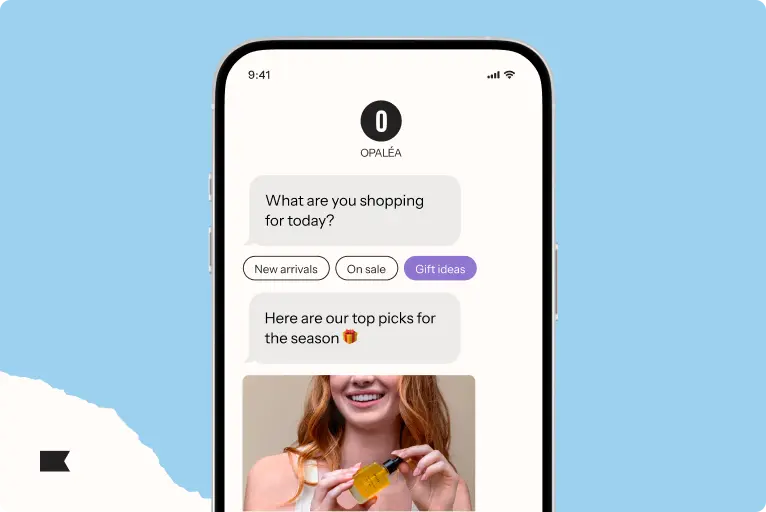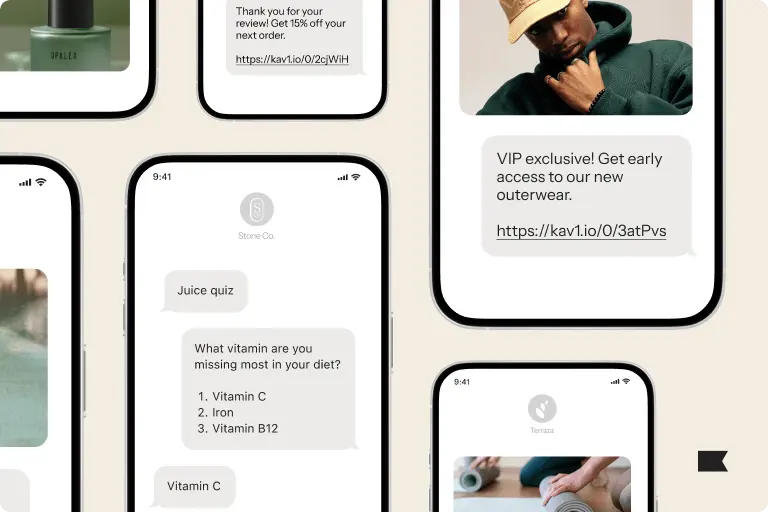6 factors to consider when choosing the right SMS marketing platform

Text message marketing is no longer optional for consumer brands. It’s a necessity. Shoppers expect timely, personalized text messages alongside email, and the brands that get it right win more revenue and stronger loyalty.
But text message marketing doesn’t exist in a vacuum. The most effective strategies pair SMS with email and other channels as part of a unified CRM approach. When all your channels share data, you can orchestrate the entire customer journey from a single platform, eliminating disjointed experiences and maximizing impact.
If you’re considering adopting an SMS marketing platform or switching from the one you already use, you know the choice isn’t simple. Features are similar across providers, pricing can be opaque, and migration can feel daunting.
So what should you prioritize when evaluating SMS marketing platforms? Here’s a clear framework, based on insights I’ve drawn from over 8 years as a lifecycle marketer and currently as lifecycle marketing lead at Prismfly. All year long, I work with ecommerce brands navigating these exact decisions.
1. Prioritize seamless integrations
Think of your marketing channels like a symphony: you need a conductor to make sure your audience gets the best possible experience, with no one moment bombarding them or making them feel overlooked.
That’s why integration is the single most important factor to evaluate. SMS should work hand in hand with email, push notifications, and even WhatsApp.
Disconnected journeys frustrate subscribers, and there’s no reason for them to exist. A good SMS marketing platform:
- Syncs with your email platform to coordinate timing and frequency
- Unifies customer data, so you know what each subscriber has already received
- Allows cross-channel triggers, like sending a push notification if someone ignores a text
SMS marketing platform example: A home goods brand launches a spring sale. If a shopper doesn’t open the promotional email within 24 hours, the brand’s SMS marketing platform automatically sends them a text reminder with the same offer. The channels work together, not in competition.
2. Check if it makes migration worthwhile—and easy
Switching platforms isn’t just about features. It’s about whether the benefits outweigh the hassle.
Once a brand commits to migration, they rarely turn back. But the transition can be smoother or bumpier, depending on the provider.
Look for:
- Short code continuity: If you’ve been texting customers from one number, you don’t want to suddenly show up with another.
- Clear onboarding support: Migration should feel guided, not like guesswork.
- Data portability: You should be able to transfer subscriber lists, segments, and historical performance without losing valuable context.
“Clear onboarding support might be the most important thing of all,” says Stefan Milicevic, strategy director at Underground Ecom. “Proper onboarding support is timely, hands-on, informative, and transparent. With it, you can actually increase your revenue and ensure ROI. If you’re messaging your support person and they’re not responsive, stop and look elsewhere immediately.”
SMS marketing platform example: A fashion retailer moves from one SMS marketing platform to another. Because they keep their existing short code, subscribers never notice a difference. They just keep receiving texts. That continuity preserves trust and avoids confusion.
Clear onboarding support might be the most important thing of all.
3. Make sure it protects compliance today and tomorrow
SMS compliance isn’t glamorous, but it can make or break your SMS program. Unlike email, where mistakes might just lower deliverability, SMS violations can trigger lawsuits and heavy fines.
“This is especially true if you’re messaging subscribers in multiple locations, such as Texas, Florida, California, and Europe,” says Milicevic. “Any one instance of a compliance violation (as in one single text message) can bring a separate lawsuit, bringing total damages up to millions of dollars.”
A future-ready platform:
- Proactively guides you through opt-in requirements
- Enforces message frequency and quiet hours where necessary
- Stays ahead of evolving regulations—not just current ones
Example: A beauty brand avoids risk by using an SMS marketing platform that automatically stops texts after quiet hours in each customer’s time zone. They don’t have to manually monitor schedules. The platform bakes compliance in.
4. Evaluate AI capabilities
AI has become table stakes in marketing, but SMS is just starting to see its potential. While email has been the early playground for AI, SMS is catching up. Brands that adopt AI for SMS can gain an edge in personalization and efficiency.
Some SMS marketing platforms are experimenting with AI-powered features like:
- Automated segment creation
- Optimal send time predictions
- Copy suggestions tailored to subscriber behavior
If AI is important to you, evaluate how mature the tools really are, and whether they’ll make a measurable impact.
SMS marketing platform example: A supplements brand uses AI to predict when a customer is likely running low. Instead of sending the same replenishment text to everyone, AI times the message individually. Each subscriber gets a re-stock reminder when they actually need it.
5. Confirm it unlocks advanced automation
The more flexible your automation, the more scalable your SMS program becomes. Don’t settle for simple blast campaigns. A good SMS marketing platform:
- Triggers texts based on customer engagement (or lack of it)
- Updates customer records in real time
- Builds sophisticated flows that react dynamically to behavior
“An AI-powered platform can predict which marketing channel may drive engagement at a given moment, whether it’s email, text message marketing, WhatsApp, or push, and deliver the right message through the right channel without forcing marketers to guess,” says Ben Zettler, founder of Zettler Digital.
“This reduces inefficiency and tool sprawl while ensuring that every customer interaction is optimized for both impact and timing,” Zettler adds.
SMS marketing example: A pet supply store builds an automation that sends a welcome text, then follows up only if the subscriber clicks the link. If the shopper makes a purchase, the flow ends. If not, the system automatically triggers a “first order discount” text 3 days later.
That’s the power of advanced automation: saving time while maximizing conversions.
An AI-powered platform can predict which marketing channel may drive engagement at a given moment without forcing marketers to guess.
6. Get clear on price
Finally, let’s talk cost. SMS is expensive compared to email, and pricing models can be confusing.
Every provider charges on a per-message basis, but contracts may vary in how those messages are packaged, committed, or billed.
“Some providers don’t include carrier fees in the per-message or per-credit pricing, while others do,” says Zettler. “Make sure you evaluate a vendor while taking into account the full cost of usage.”
When comparing platforms, consider:
- Per-message rates: Even small differences add up at scale.
- Contract flexibility: Are you locked in, or can you adjust as your list grows?
- Value relative to features: The cheapest option isn’t always the best if it limits growth.
SMS marketing example: A skincare brand signs a contract that includes unused messages rolling over month to month. That flexibility ensures they don’t pay for messages they’ll never send, making the investment easier to justify.
Choosing the best SMS marketing platform: pulling it all together
Choosing an SMS marketing platform isn’t about picking the one with the flashiest feature set. It’s about aligning with your brand’s priorities and removing friction for both marketers and subscribers.
To recap, here are the 6 factors to weigh most heavily—plus how they show up in practice:
- Seamless integrations: e.g., triggering a text when an email is ignored
- Ease of migration: e.g., keeping the same short code during a switch
- Compliance readiness: e.g., enforcing quiet hours automatically
- AI features: e.g., timing re-stock reminders to individual needs
- Flexible automation: e.g., building flows that adapt to behavior
- Transparent pricing: e.g., contracts that roll over unused messages
When you view your SMS marketing platform not as a silo but as part of your customer engagement ecosystem, you’ll set yourself up for stronger results in 2026 and beyond.

Related content

Marketers are right to be cautious right now. The Texas settlement has sparked more questions than clarity—but that’s exactly why taking a compliance-first approach still matters.

Google’s RCS Roadshow and Klaviyo are shaping the future of mobile marketing with AI-powered personalization and trusted, interactive messaging.

Explore real-world SMS marketing examples and use cases to enhance customer engagement. Learn how businesses leverage SMS for promotions, reminders, and more.